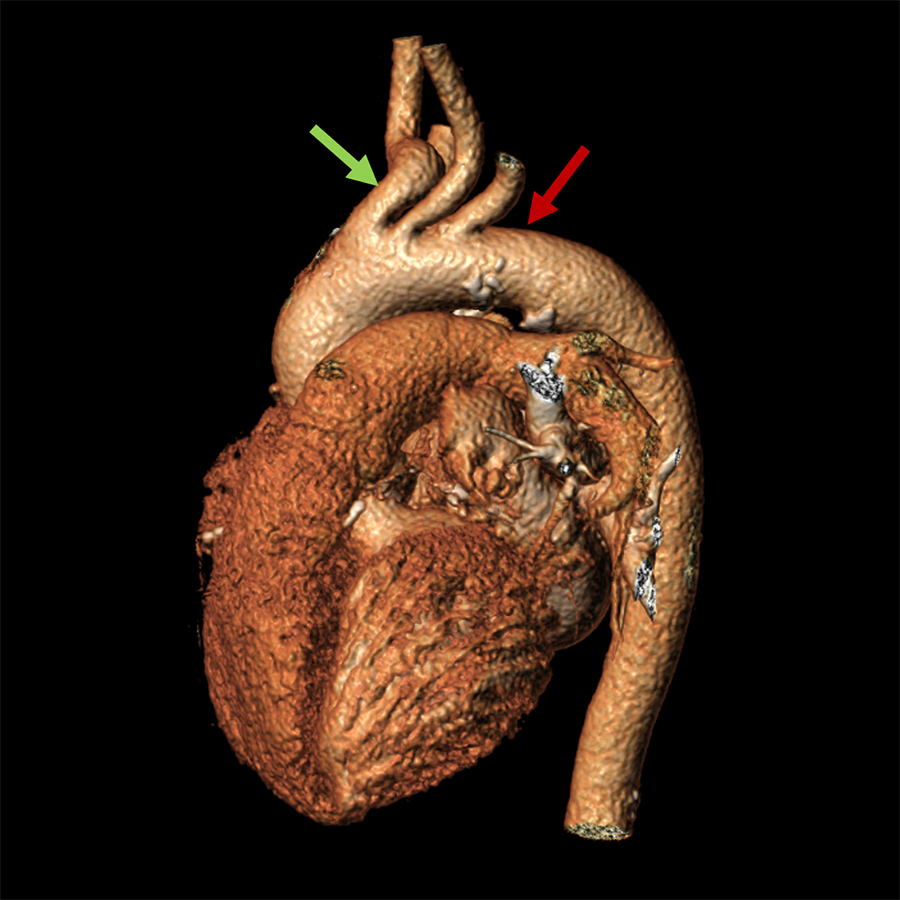
You be the Anatomist!
To which species does this image of an aortic arch (red arrow) belong?
Answer:
This is an image of a human aortic arch!
Here’s how we know: From the aortic arch (red arrow) emerge three branches, (i) the left subclavian artery, (ii) the left common carotid artery, and (iii) the brachiocephalic trunk (green arrow). The brachiocephalic trunk bifurcates into the right subclavian artery and the right common carotid artery.
The arrangement of the aortic branches in humans and animals certainly varies between species. Nevertheless, there are close anatomic and physiologic similarities among sheep, pigs, and humans, and with appropriate expertise in comparative anatomy that is crucial in preclinical science, ovine and porcine species are both highly relevant models for translational research in cardiovascular intervention and surgery.
This CT scan image has been obtained with permission by Veranex’s imaging specialists from a scan of the image gallery of the Institut Mutualiste Montsouris, Paris, France.
Comparative anatomy is key to understanding which models are best, their potential limitations and how to leverage this information to provide compelling evidence of safety and efficacy of a novel device.
If you are interested in learning more about our preclinical research and pathology services, we encourage you to get in touch with us. We would be delighted to discuss your specific needs and plans.
